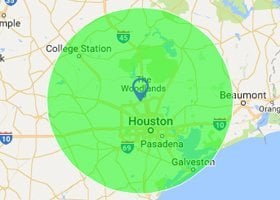How Close Can a Septic Tank be From a Property Line?
There are all sorts of reasons why you might want a septic tank constructed on your property, ranging from a desire to be more autonomous and to do without a potentially fickle or flawed local sewage system, to the need to take care of your own waste water in a more remote and isolated area.
Increasingly, many people are also finding septic tanks to be an appealing home feature, because of the fact that they have certain significant environmental benefits when they are properly installed and maintained, including the fact that they help to replenish natural groundwater over time.
Nonetheless, there are a number of different things that you should understand and have a clear sense of before going ahead and having a septic tank constructed on your property – or, for that matter – moving into a property that already has a septic tank.
Here are a few basic details about septic tanks to keep in mind.
How does the septic tank fit in on a property?
Many people wonder about how, exactly, a septic tank fits in on their property, and how it influences and shapes the layout of the property.
Here are a few basic points to be aware of.
There are regulations determining how far the septic tank can be from the property line
Since a septic tank involves storing, breaking down, and dealing with waste water and sewage material from your home, it needs to be kept a safe distance from your living quarters and other features of your property and the surrounding landscape.
Generally, your septic tank itself will need to be about 5-10 feet from your home, while the “leach field” or “drainage field” will need to be at least 20 feet from your home, and at least 100 feet away from wells and streams.
What is a “leach field” or “drainage field” anyway?
A “leach field“ or "drainage field" is a fundamental part of the septic tank system.
When waste water has accumulated in the septic tank it will be siphoned off through certain drainage pipes, into an area of land that has been carefully set aside, and where the soil has been layered with material such as gravel.
The waste water will enter this "field" underground, where it will undergo a process of filtration, and where the waste will naturally be broken down by bacteria in the soil.
From here, the water will filter down and continue purifying until it rejoins the  groundwater supply.
groundwater supply.
Do I need to do anything to keep my septic tank from overflowing?
Septic tanks need to be pumped out on a regular basis, with it commonly being recommended that they should be pumped between every one and three years.
At the same time, though, septic tanks are pumped out mostly to remove solid waste, and to ensure that structural integrity of the tank remains intact.
The water content of the tank does not need to be drained, and if the system is working properly, and the  drainage field is in good condition, your septic tank will be mostly “full” all the time, as water continues to enter and be siphoned off.
drainage field is in good condition, your septic tank will be mostly “full” all the time, as water continues to enter and be siphoned off.




